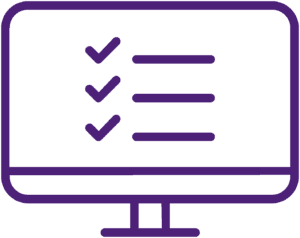There are few professions where communication skills are more important than in nursing.
Healthcare workplaces are fast-paced, decisions can be a matter of life or death, and 24hr care means handovers between day and night shifts need to be thorough.
If you are a nurse, odds are you’ve experienced instances where poor communication skills impacted your ability to do your job.
Read on to learn the importance of different types of communication skills in nursing.
Why Communication Skills in Nursing are Essential

The 6 C’s are a set of values used to illustrate best working practices for nurses. Communication appears as the 4th C.
Communication underpins all aspects of nursing. From making a patient feel comfortable, to asking them for consent to treatment, communication is essential for managing their treatment and observing their rights.
Strong communication skills are also vital among colleagues. Sharing important patient information, such as medication details, needs to be thorough. On the other hand, giving feedback on a colleague’s performance might need a lighter touch.
Communication in nursing can be broken down into three broad areas: verbal, non-verbal and visual. All three are useful in different situations.
Verbal Communication Skills in Nursing
Verbal communication is using spoken language to get your message across.
Verbal Communication Skills in Nursing for Patients
Verbal communication with patients serves two main purposes: to comfort, console and relax, or to explain treatment and obtain consent.
As a nurse, making sure your patient is as relaxed and comfortable as possible should be your primary objective. Be friendly and genuinely interested in what your patient has to say. Sharing small talk and humour work wonders for building a rapport with your patients and helping them to feel at home in an unfamiliar place, or at an uncomfortable time.
One of the most distressing things about being a patient is the unknown. If you don’t understand your treatment options, or if you aren’t sure how serious your illness or injury is, you will likely feel anxious.
As a nurse, you need to always speak to your patients with plain English, free of jargon and technical terms, so there is no room for interpretation. This honesty and clarity will allow your patients to understand what is happening to them and process it.
If you are obtaining consent for a procedure or treatment plan, communicating clearly and frankly is even more important. A patient can’t give consent to something they don’t understand. This is especially true for elderly, culturally diverse or impaired patients.
These skills also extend to a patient’s family. If you have any interactions with them, you need to be prepared to sound consoling, or to explain a patient’s treatment or outlook if they aren’t of sound mind.
Verbal Communication Skills in Nursing for Colleagues
Strong verbal communication skills are also essential for how you speak to your colleagues. In fast-paced healthcare environments, it can be tempting to put off discussions for when you have more time. The problem is, that moment may not come.
Verbal communication needs to be clear, precise and efficient. Stick to the relevant information and avoid sharing generalisations or vague statements. Just like when dealing with a patient, you don’t want to leave room for interpretation. This is especially true if you are sharing information with someone from a different health discipline who could misunderstand your disciplines’ terminology..
Giving and receiving feedback is also important in work relationships. If you are a more experienced nurse or a manager, treat younger, inexperienced nurses the same way you would your patients. Be clear about your information, and make sure they feel comfortable and confident while also being honest about any mistakes or opportunity areas.
Non-Verbal Communication Skills in Nursing
Non-verbal communication is using body language, signals and gestures to convey meaning, rather than spoken words.
Non-Verbal Communication Skills in Nursing for Patients
While it’s easy to change how we speak, it’s much harder to change how we appear. Body language, including the tone of speech, account for 70-93% of all communication.
What this means is that no matter how friendly your words are, if your tone and body language are dismissive or disinterested, your patient will feel uncomfortable.
Strategies like maintaining eye-contact to show you are listening, avoiding crossing your arms to avoid appearing defensive, and speaking with a calm tone to pacify a distressed patient are all essential communication skills in nursing.
Understanding a patient’s non-verbal cues is also essential. If a patient won’t make eye-contact or appears to shake or flinch when you are nearby, this tells you they are frightened or uncomfortable without them needing to say it.
Likewise, if the patient is verbally communicating that they are okay, but are grimacing or sweating, this might indicate that they are in more pain than they are letting on. Being observant of your patient’s non-verbal behaviour is just as important as being aware of your own.
It’s also worth noting that while not technically communication, making sure confidential conversations with patients are held in private is vital. Never discuss sensitive matters in waiting rooms and hallways where the patient won’t feel comfortable responding truthfully.
Non-Verbal Communication Skills in Nursing for Colleagues
Non-verbal communication can also be used with colleagues. For example, gestures and hand signals can save time when needing to move urgently during an emergency situation.
Maintaining positive body language and tone of voice is also important for work relationships. A nurse who is smiling and has a relaxed posture will be more pleasant to work alongside than one who frowns, shouts and closes off their body language.
If you are in a managing or teaching role, this is even more important. Not only do you need to demonstrate the right non-verbal behaviour, but you need to keep students comfortable so that they are in the right frame of mind to learn.
Visual Communication Skills in Nursing
Visual communication relies on props, like images and video, rather than verbal or non-verbal language.
Charts and images like scans or X-Rays are incredibly useful for communicating a lot of information in a short period of time.
For patients, images can make receiving bad news more objective, and help them pass through the initial rejection of the information more easily. It can also help them contextualise an injury. Telling someone they have a metatarsal fracture may not provide the same level of comprehension as showing them an X-Ray of a broken bone in their foot.
For quick communication between colleagues, charts and scans can also save time spent explaining a condition. Simply hand them the data and they can see it for themselves. Charts are also essential for communicating important information like recent medication across nurses who work opposite shifts but care for the same patient.
Nurses Now
Nurses Now is an agency that employs nurses who display qualities beyond just being qualified, and strong communication skills are one of our most sought after traits. Our team of professionals are passionate about the car they provide.
If you feel like you demonstrate the skills in this article, we’d love to hear from you!
For more information about what we do, and how a career with Nurses Now could benefit you, visit our website.



